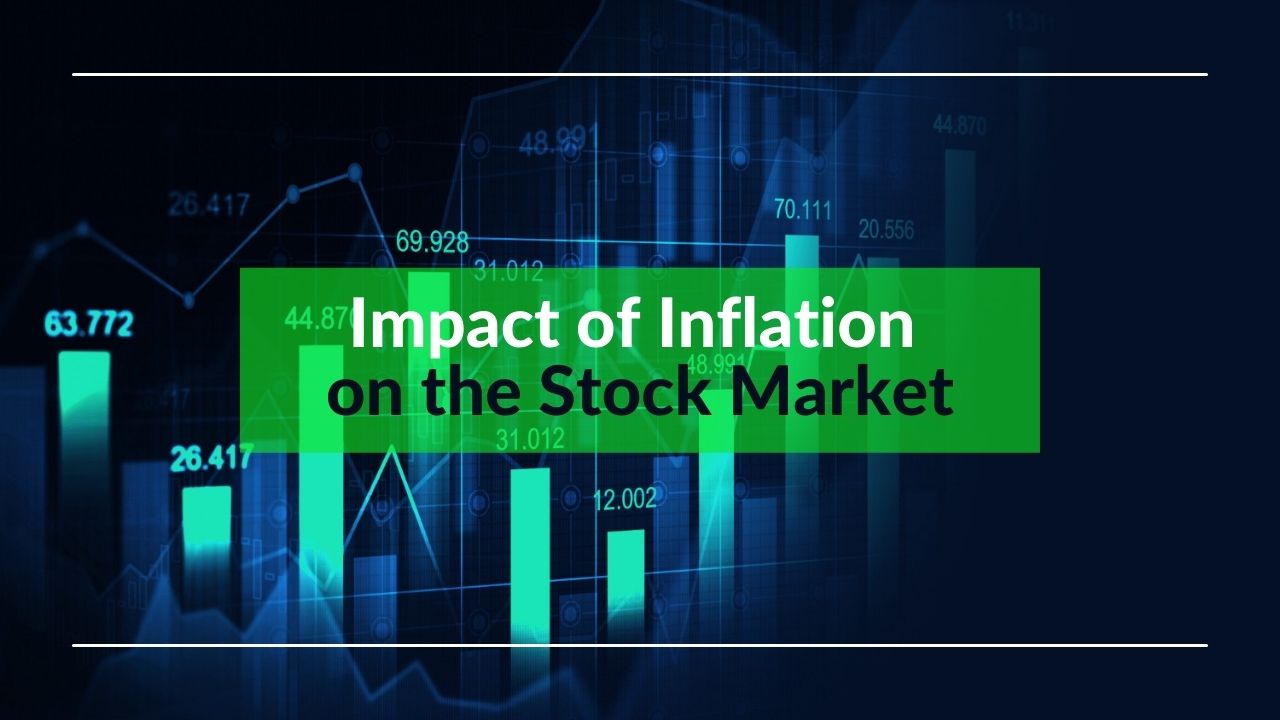Unveiling the Dark Side: The Hidden Risks of Chasing Growth Stocks
Growth stocks beep loud on most investors’ radars with their siren-like promise of ample rewards. But behind the allure, a stark reality waits: What are the risks of investing in growth stocks? Let’s dive deep into this puzzle. You’ll find valuations can swing wild, giving your nest egg a real shake. Look at market mood swings, and you see why holding these stocks is often like riding a roller coaster, blindfolded.
High interest rates? They can slap growth stock prices down before you know it. And earnings? They’re like a box of chocolates for these companies—you never know what you’re gonna get. If you’re set on the growth track, hang tight. We’re about to peel back the layers of risk that can turn a sprint to the front of the pack into an investment stumble.
Unveiling the Dark Side: The Hidden Risks of Chasing Growth Stocks
Grappling with Market Volatility and Valuation Pitfalls
High-growth stocks can move up and down a lot. This is what we call “volatility.” It’s not just a random word; it means that the price of these stocks can change very quickly. This is a big deal for you if you own these stocks because it can mean the difference between making money and losing it.
Understanding Growth Stock Volatility
Why do these stocks jump all over the place? A lot depends on what people feel about the market. This is the “market sentiment impact.” If people are scared or worried, they might sell their stocks. When a bunch of people sell, the stock price falls. And if good news comes out, everyone buys and the price goes up. It’s like a seesaw that goes up and down with people’s moods.
Interest rates also play a big part. Think of growth stocks as a tree that needs water to grow. When interest rates are low, that’s like getting lots of water. The tree grows big and strong. But when rates rise, the water gets less. The tree doesn’t grow as much. This is “interest rate sensitivity.”
Now, let’s chat about making money, or as the fancy folks call it, “profit generation uncertainty.” Companies that grow fast are often new. They might not have figured out how to make steady money yet. This is a huge risk because if they don’t make money, your stocks might not be worth much.
Navigating High Valuation Risks
Have you heard of PE ratio? It’s a way to see if a stock costs too much. It’s like checking the price tag before you buy something. You don’t want to pay a lot for something that’s not worth it, right? But these fast-growing stocks often have high PE ratios. That means they are super expensive, and this is “high valuation risks.”
Buying a stock with a high PE ratio is risky. If the company doesn’t grow as expected, the stock price can fall hard. It’s like buying a shiny, new toy that breaks the next day. You paid a lot, but it didn’t last.
“Scaling challenges” happen when a company gets big fast and has problems handling it all. It’s like when you try to carry too much and drop things. These companies might have amazing ideas, but if they can’t handle growing big, your stocks could suffer.
Lastly, let’s not forget about “competitions in innovation.” New ideas are everywhere. Today’s hot product might be old news tomorrow. A company needs to keep creating new things to stay ahead. If not, someone else will, and they’ll take over the market.
I hope you see now why it’s not always smooth sailing with growth stocks. They can be like a wild horse — tough to handle, but if you manage, the rewards can be big. Just remember, it takes skill, patience, and a strong stomach to stick with them through the ups and downs.
Interest Rates and Earnings: The Investor’s Dilemma
Interest Rate Sensitivity of Growth Stocks
Growth stock volatility often spikes when interest rates change. Why? These stocks bet on future earnings, which get riskier as borrowing costs rise. Think of it like this – when a company is growing fast, it spends a lot of money to grow even faster. To spend this money, they often need loans. Now, if interest rates go up, loans cost more. This means they don’t earn as much.
For you, as an investor, high interest rates can shrink the value of these stocks. This happens because investors think future company earnings won’t be as high. When you hear news about interest rates rising, that’s a signal to watch your growth stocks closely. They could lose value fast. But don’t just look at the rates—a smart move is to see how the company manages its money. Can it still make profit without too much loan money? This tells you a lot.
Dealing with Profit Generation Uncertainty
Profit generation uncertainty is a big deal in growth stocks. But why? These companies are like sprinters that don’t know if they can keep up the pace. They might earn big, but they might also spend too much trying. This makes it hard to guess how much money they’ll make down the road.
Scaling challenges are part of the uncertainty. As a company grows, it has to spend more to make more. Sometimes, it can go off track. It might spend too much and not earn it back. This is where we talk about revenue versus profit focus. Revenue is all the money coming in without costs cut out. Profit is what’s left after costs. You want a company that keeps its eye on profit. That’s the money you, as a shareholder, care about.
Remember, a high PE ratio can signal risk too. PE stands for price-to-earnings. It compares a company’s share price to its earnings. A high number shows that a stock might cost more than it should. That’s a risk if profits don’t keep growing.
In dealing with these uncertainties, patience is key. A long-term investment approach helps. Don’t jump ship on a bad earnings report. Look ahead, and ask: Can this company keep succeeding? Watch for signs of trouble, like if they count on loans too much.
In the end, growth stocks are a bit of a roller coaster. They promise big dreams, but there are no sure things. Check how sensitive they are to interest rates and if they can really make profit. It’s about balancing the hope of what could be, with the real numbers of today. Be patient and stay informed. That’s your best shot at success with growth stocks.
Competing for the Future: Innovation Risks and Rewards
Challenges Growth Companies Face When Scaling
Growing big fast sounds great. But it comes with big problems, too. Think of climbing a mountain. It’s tough. You might fall. It’s the same for companies that grow too fast. They struggle to keep up with their own growth. This is what we call scaling challenges.
When a company gets big really fast, it can be hard for it to keep making money at the same rate. As a company grows, it needs more people, tools, and space. But finding the right people takes time. And switching to bigger and better tools can cost a lot. Even if a company has what it needs, sometimes things don’t work well together. It’s like trying to fit pieces from different puzzles into one picture. This can lead to profit generation uncertainty.
Funding is a big deal too. More growth often means more money is needed. Sometimes companies even need to give up some control to get more cash. If they aren’t careful, the folks who started the company might end up owning less. That’s a rough trade. We call this shareholder dilution.
Remember, bigger doesn’t always mean better. A company can grow in size but not in money. Revenue vs profit focus keeps this in check. It reminds companies not to just make more sales, but to make more money too.
It’s a delicate balance to grow but keep getting better at the same time. Some companies rush growth over profitability. They want to look good now and make money later. This sometimes works. But it can also be a risky move.
The Competitive Landscape of Innovation-Driven Industries
Now let’s talk about the race in the tech and creative realms. These are spaces where the next big thing can change everything – that’s competition in innovation. The ones leading the race one day can be left behind the next. Just because you’re winning now doesn’t mean you always will.
In this race, new ideas are like fuel. But not every idea wins the race. Some just don’t work out. This makes tech stock risks and biotech investment hazards a big worry. The trick is to make smart bets on which ideas will take off.
Investing in these companies can feel like riding a roller coaster. Their stock prices can go up and down a lot – that’s called growth stock volatility. Changes in how people feel about the market, or market sentiment impact, can make this worse.
Interest rate sensitivity is another bump in the ride. When interest rates go high, it costs more to borrow money. This can hit growth stocks hard. They often rely on borrowing money to fuel their growth.
Lastly, there’s the risk of the financial bubble potential. When too many people put too much money into growth stocks, their prices might not match their real value. This is scary because prices might fall hard later.
In all this, patience is key. A long-term investment patience helps you ride out the crazy ups and downs. You have to know when to jump in, or the right entry point significance, and when to hop off, that’s the exit strategy importance.
It’s a chess game, with every move counting. You have to look ahead and think about where your move might take you in the long game.
The Market’s Mood: Economic Influences and Investor Behavior
How Economic Downturns Skew the Trajectory of Growth Stocks
Let’s get real about something: growth stocks are like rockets. They can soar high, fast. But figure this: when the economy catches a cold, growth stocks can get the flu. When folks worry about jobs and bills, they pull back on spending. Less spending means less profit for companies, especially those betting big on future growth.
These companies often reinvest profits to grow. But if the economy slows, so does their cash. We see heavy falls in their stock prices then. This rough patch is because growth stocks have high hopes baked into their cost. Too much bad news and boom, the stock takes a hit. That’s what we call economic downturn effects.
When the market shakes, it’s a chance for some to buy low. But for others, it’s a time of stress. It’s key to know the dance between risk and reward here. You can’t ignore how downturns twist growth stocks’ paths. Keep a cool head, and be ready to act with sense.
Recognizing and Reacting to Financial Bubble Potentials
Stick with me here. Financial bubbles are when stock prices puff up way past what’s sane. It’s like a balloon ready to pop. You could win big, or lose even bigger. Bubbles form when everyone’s throwing money at a hot trend. Too much cash chasing too few goods – we all know that story.
But check it out: even smart folks get caught up in the craze. They throw good sense out the window and chase high prices. Then something shifts, fear creeps in, and bam, the rush to the door starts. Prices tumble, and dreams of quick cash turn into nightmares of loss.
Being keen to this game means you watch the signs like a hawk. Prices going nuts without good reason? Earnings reports more fairy tale than fact? When you see this, a bubble might be brewing. Don’t get swept up. Look hard at the real worth behind a stock’s price. That’s how you dodge heartache when bubbles go bust.
Watching financial reports is like reading the mood of the market. Use them as your guide. They can tell you when to ride the wave or when to sit tight. Remember our talk about market sentiment? It’s all about getting the vibe right. Scan for overhyped stock pitfalls and be ready to jump ship if waters get rough.
There you go, folks. Growth stocks can offer big wins, but they’re not a sure thing. Keep your eyes wide, pick your plays with care. Understand the risks, watch the economy, and don’t get trapped by pretty bubbles. Stay sharp, and may your investments grow just right.
We’ve tackled the tough parts of the stock market, from the ups and downs of growth stocks to the tricky plays of high valuations. We’ve also looked at how interest rates and earnings can shake the ground for investors. It isn’t easy, but knowing how sensitive growth stocks are to these changes helps us stay on track. And we can’t forget about innovation – it’s a game of risk and reward where only the best players win.
When scaling a company or battling in innovative fields, knowing the risks is key. Lastly, never ignore the market’s mood swings. Economic shifts and bubble buzz are real, and they can throw your investments for a loop.
Here’s the bottom line: Investing isn’t just about the numbers, it’s also about staying smart and adapting. Keep these points in mind, and you’ll be better prepared to ride out the market’s waves. Keep learning, keep your head on straight, and don’t let the market’s mood dictate yours. Happy investing!
Q&A :
What are the potential downsides of investing in growth stocks?
Growth stocks are shares in companies that are expected to grow at an above-average rate compared to other firms in the market. However, investing in them bears several risks. One primary risk is their volatility; growth stocks can be more sensitive to market fluctuations, which may lead to significant price swings. Another risk is overvaluation, as high expectations for future growth can inflate stock prices beyond reasonable valuations. Additionally, growth companies often reinvest earnings back into the company, meaning dividends can be non-existent or very low.
How does market volatility impact growth stock investments?
Growth stocks are often more volatile than the rest of the market because they are typically associated with younger, more dynamic companies, which can experience rapid changes in their business outlooks. This sensitivity to both internal and external factors—like changes in investor sentiment or disruptive industry developments—means share prices can fluctuate widely. Investors in growth stocks should be prepared for the possibility of significant short-term losses, even if the long-term growth potential remains strong.
Are growth stocks more vulnerable during economic downturns?
Indeed, growth stocks can be particularly susceptible during economic downturns. Since these stocks are valued based on future expectations, any signs of economic slowdown can lead to sharp declines in their stock prices. Growth companies may also have less established financial reserves or diversified product lines to weather economic challenges, making them more at risk compared to well-established companies with steady revenue streams.
Is there a risk of overpaying for growth stocks?
Yes, one of the main risks of investing in growth stocks is the potential for overpaying. Investors might become overly optimistic about the company’s future growth prospects, driving the price beyond what is justified by its actual financial performance. This risk is exacerbated by the fact that growth stocks usually don’t pay dividends, which means investors rely solely on stock appreciation for returns. If the growth doesn’t materialize as expected, investors could face significant losses.
What should investors consider to mitigate the risks of growth stock investing?
Investors can take several steps to manage the risks associated with growth stock investing. Diversification is critical; by not putting all their eggs in one basket, investors can protect themselves against significant losses from a single company’s underperformance. It’s also essential to conduct thorough research to understand the company’s true potential for growth, the competitive landscape, and the broader market trends. Setting stop-loss orders to protect against massive losses and staying informed about changing market conditions can also help mitigate risk.






